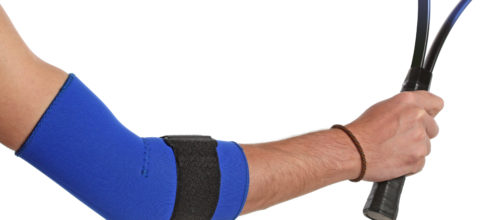
Lateral Epicondylitis or Tennis Elbow
Lateral Epicondylitis is inflammation of the extensor tendons of the elbow and is considered to be an overload injury. It can commonly occur when performing the backhand during tennis, which is where it got the name “Tennis Elbow.”
Causes of Tennis Elbow include:
- Improper technique
- Excessive wrist extension
- Overuse of the wrist and hand
- Age (people between the ages of 30 and 50 are more at risk)
The constant repetition and lifting required of certain activities can lead to injury as well. Activities such as tennis or racquetball, gymnastics, painting, plumbing, and carpentry make you more prone to developing tennis elbow.
Symptoms:
- Gradual onset of pain
- Painful supination and pronation
- Palpable pain at lateral epicondyle
- Edema and ecchymosis over the area
Diagnosis: Based on signs and symptoms in conjunction with a physical exam, a diagnosis will be made. The results of the exam are usually:
- Tenderness about 1-2 cm away from the lateral epicondyle, at the tendons for the wrist extensor muscles.
- Pain with resisted wrist extension when the elbow is extended.
- Pain when lifting an object such as chair with the palm down.
- Range of motion and sensation are usually not affected.
- There is rarely visible redness or swelling.
Treatment:
Approximately 90% of patients have success with nonsurgical treatment. The first step toward recovery is to give your arm proper rest. This means that you will have to stop participation in sports or heavy work activities for several weeks.
Non-steroidal anti-inflammatory medicines. Drugs like aspirin or ibuprofen reduce pain and swelling. If you participate in a racquet sport, your doctor may encourage you to have your equipment checked for proper fit. Stiffer racquets and looser-strung racquets often can reduce the stress on the forearm, which means that the forearm muscles do not have to work as hard. If you use an oversized racquet, changing to a smaller head may help prevent symptoms from recurring.
Specific exercises are helpful for strengthening the muscles of the forearm, which you will be taught at physical therapy. Your therapist may also perform ultrasound, ice massage, or muscle-stimulating techniques to improve muscle healing.
